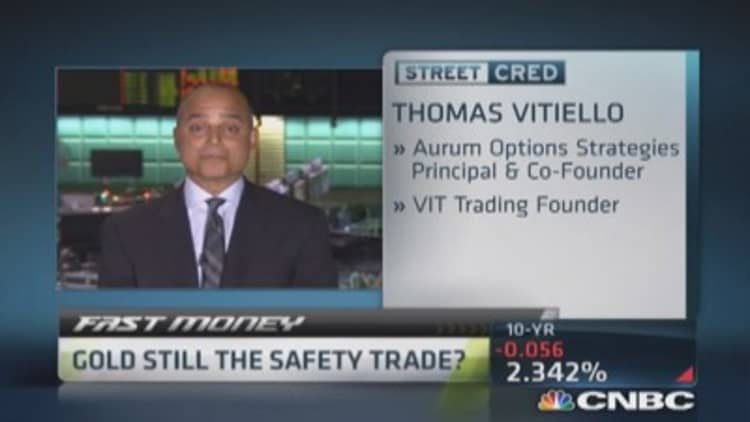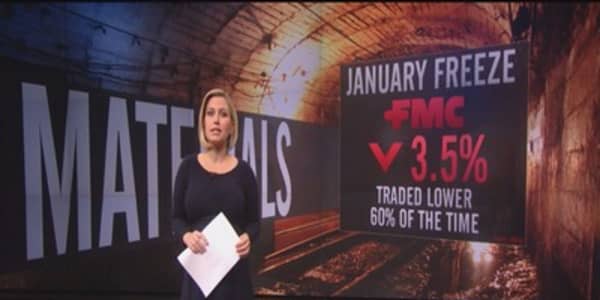While international oil prices sit at a one-year low, concerns that Russian geopolitical tensions will drive up energy prices seem to have eased. But fears over the future of the Russia-Ukraine crisis are pushing another commodity to highs not seen in more than a decade.
Palladium futures prices opened the week at nearly $895 per ounce—their highest level since Feb. 22, 2001—on trader fears that exports from Russia could be limited by sanctions, experts tell CNBC. And despite analysts' observations that those worries are not entirely rational, many are still predicting that the metal, used in catalytic converters, will rise to $1,000.
Palladium buyers have demonstrated "excessive concern" that Russia, the world's largest producer of the metal, may get slapped by Western sanctions, and that has been the primary driver of its rise, said Rohit Savant, director of research for CPM Group.
"A lot of this rally was based on an expectation that you would see restrictions on Russian exports," Savant said. "There's no real reason for anyone to believe this."
Read MorePalladium bulls are getting ready for a run
Not only are sanctions unlikely—they would hurt Western manufacturers more than Russia—but they actually wouldn't affect the global supply significantly even if they did happen, he said.
"Even if the West does place restrictions on Russia, you'd see it come out of the Russian market, move to China, and from there to on to the U.S.," he said.
The last—and only—time palladium was this high was at the end of 2000 through the beginning of 2001.

With worries weighing on palladium buyers, there's a sense that the supply side is "very constrained," said Mike McGlone, ETF Securities' U.S. director of research.
Adding to those concerns, miners in South Africa—the second-largest palladium producer—went on strike earlier this year, spurring similar worries. Although these strikes are over, the shock to production "still hurts quite a bit," McGlone said.
Read MoreThis will be the key driver of gold this year
Despite supply worries having largely abated, most analysts are expecting palladium to touch levels around $1,000 per Troy ounce, according to McGlone. Savant said he is looking for the metal to continue a gradual price increase, although it faces near-term resistance at the $900 level.
Critical for auto industry
Palladium is "the most industrial-oriented of the precious metals," according to ETF Securities, with industry accounting for about 80 percent of global demand. The metal's primary use is in the manufacturing of catalytic converters, which help control vehicle emissions, and it has benefited from several supportive demand trends in this area.
Thanks to booming automobile manufacturing in the United States and China, the metal has never been in greater demand, McGlone said. Growing awareness of pollution issues in China has also driven the demand for stricter emissions standards in vehicles, which have in turn boosted demand for palladium.
Gasoline engines have long relied on palladium catalytic converters, and more recently, technologies for diesel engines have allowed for increasing use of the metal as a substitute for more expensive platinum, McGlone said.
Read MoreSurprise commodity winner could be 'the new gold'
All those trends are only supportive factors, however, and have led to a steady 3.5 to 4 percent rise in demand that is already largely built into palladium's price, Savant said. That means that Russian sanction fears are the primary explanation for the recent rise, he explained.
Retail investors can play palladium's moves directly by buying ETFs (the only U.S. dollar-denominated one is ETF Securities' Physical Palladium Shares). An indirect way to play the metal would be in the two palladium-focused miners—North American Palladium and Stillwater Mining Company, according to Savant.
Russia's Norilsk Nickel is the largest producer of palladium, which it collects as a byproduct of nickel production. It accounts for about 41 percent of the world's yearly output, according to the company.
—By CNBC's Everett Rosenfeld





